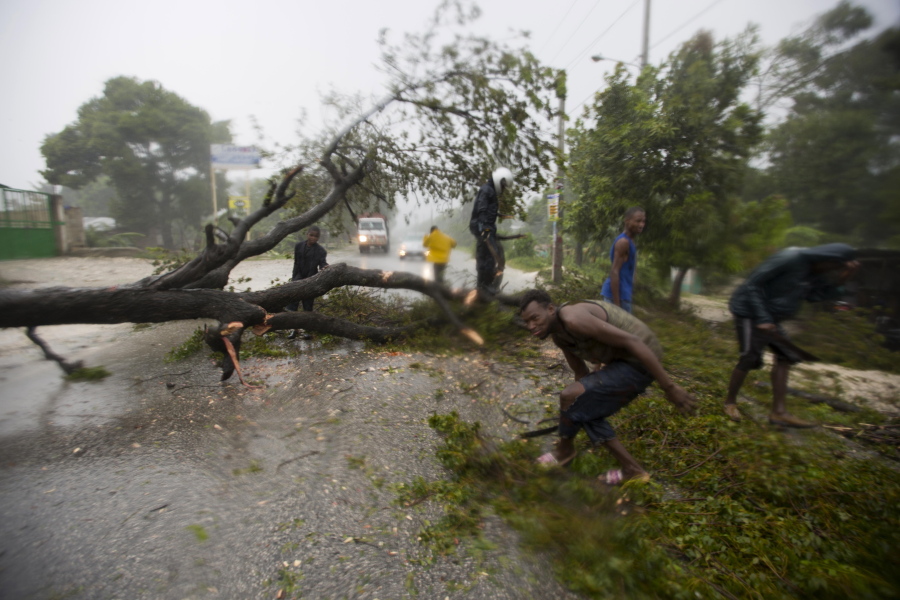PETIT-GOAVE, Haiti — Hurricane Matthew slammed into Haiti’s southwestern tip with 145 mph winds Tuesday, tearing off roofs in the poor and largely rural area, uprooting trees and leaving rivers bloated and choked with debris. At least nine deaths were blamed on the storm during its week-long march across the Caribbean.
Forecasters said Matthew could hit Florida toward the end of the week and push its way up the East Coast over the weekend. The forecast triggered a rush by Americans to stock up on food, gasoline and other emergency supplies.
The dangerous Category 4 storm — at one point the most powerful hurricane in the region in nearly a decade — blew ashore around dawn in the poorest country in the Western Hemisphere, hitting a corner of Haiti where many people live in shacks of wood or concrete blocks. It unloaded heavy rain as it swirled on toward a lightly populated part of Cuba and the Bahamas.
Damage in the hardest-hit part of Haiti appeared to be widespread, but because of spotty communications, blocked roads and washed-out bridges, the full extent was not clear. Nor was the number of deaths.
The country’s Civil Protection Agency said many homes were damaged or destroyed.
“It’s the worst hurricane that I’ve seen during my life,” said Fidele Nicolas, a civil protection official in Nippes, just east of where Matthew came ashore. “It destroyed schools, roads, other structures.”
Mourad Wahba, U.N. secretary-general’s deputy special representative for Haiti, said much of the local population had been forced from their homes, at least 10,000 people were in shelters and hospitals were overflowing and running short of water.
Wahba’s statement called the hurricane’s destruction the “largest humanitarian event” in Haiti since the devastating earthquake of January 2010.
At least three deaths were blamed on the storm in Haiti, including one person whose home was crushed by a tree in Port Salut and a 26-year-old man who drowned trying to rescue a child who had fallen into a rushing river, authorities said. The child was saved.
Four deaths were recorded in neighboring Dominican Republic and one each in Colombia and in St. Vincent and the Grenadines.
The storm left the peninsula that runs along the southern coast of Haiti cut off from the rest of the country. Many streets were impassable because of flooding, landslides or fallen trees. Local radio reported that the water was shoulder high in parts of the city of Les Cayes.
Milriste Nelson, a 65-year-old farmer in Leogane, said his neighbors fled when the wind ripped the metal roof from their home. His own yard was strewn with the fruit he depends on for his livelihood.
“All the banana trees, all the mangos, everything is gone,” Nelson said.
In the U.S., Florida Gov. Rick Scott urged coastal residents to prepare for the possibility of a direct hit and line up three days’ worth of food, water and medicine. And the White House said relief supplies were being moved to emergency staging areas in the Southeast.
“We do not know yet whether the center of Matthew will actually come ashore in Florida,” said Rick Knabb, director of the hurricane center.




